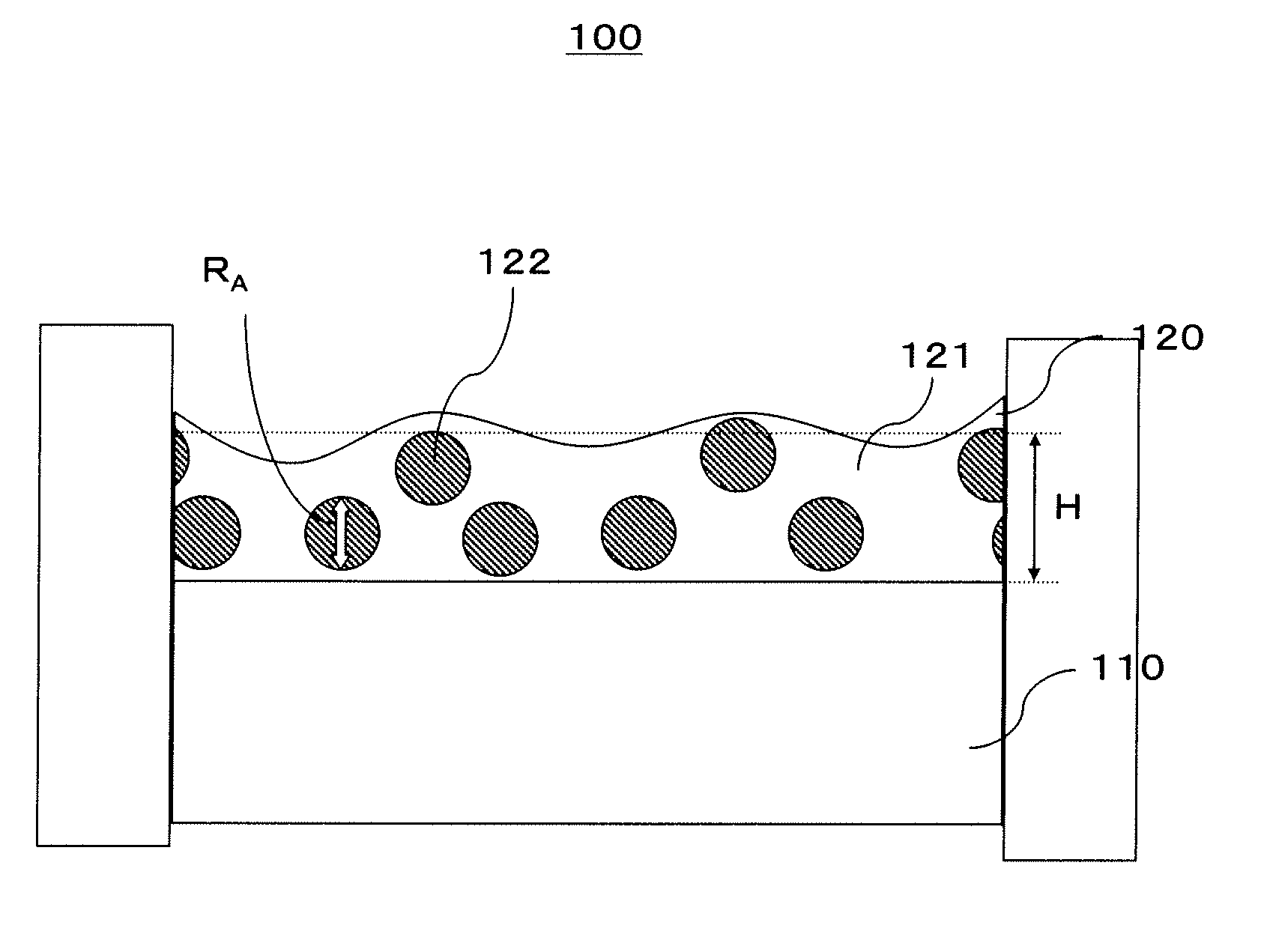Antiglare film, manufacturing method thereof and transmission type LCD
a technology of antiglare film and manufacturing method, which is applied in the direction of instruments, coatings, applications, etc., can solve the problems of increased material cost and number of processes, increased reflection, and decreased image recognizability, so as to improve adhesion between different layers and reduce cost
- Summary
- Abstract
- Description
- Claims
- Application Information
AI Technical Summary
Benefits of technology
Problems solved by technology
Method used
Image
Examples
example 1
[0090]Examples and comparative examples of the invention will be described below in greater detail.
[0091]As shown in FIG. 1, a triacetyl cellulose film (TD-80U, manufactured by Fuji Photo Film Co., Ltd.) was used as the first transparent substrate 100. In the coating liquid for forming the antiglare layer 120, 94.5 parts by weight of a silicone material curable by ionizing radiation, 5.0 parts by weight of Irgacure 184 (manufactured by Ciba-Geigy) as a polymerization initiator, and 0.5 part by weight of BYK 350 (manufactured by BYK Chemi Japan) as an acrylic additive were used as forming materials of the binder matrix 121. Further, acrylic particles, 10 parts by weight, with an average diameter of 5 μm and a refractive index of 1.49 were prepared as the particles 122. A mixed solvent containing 30 parts by weight of dioxolan and 70 parts by weight of toluene was used as the solvent. The components were mixed to produce a coating liquid for forming the antiglare layer 120.
[0092]The c...
PUM
| Property | Measurement | Unit |
|---|---|---|
| RA | aaaaa | aaaaa |
| reflectance | aaaaa | aaaaa |
| refractive index | aaaaa | aaaaa |
Abstract
Description
Claims
Application Information
 Login to View More
Login to View More - R&D
- Intellectual Property
- Life Sciences
- Materials
- Tech Scout
- Unparalleled Data Quality
- Higher Quality Content
- 60% Fewer Hallucinations
Browse by: Latest US Patents, China's latest patents, Technical Efficacy Thesaurus, Application Domain, Technology Topic, Popular Technical Reports.
© 2025 PatSnap. All rights reserved.Legal|Privacy policy|Modern Slavery Act Transparency Statement|Sitemap|About US| Contact US: help@patsnap.com



